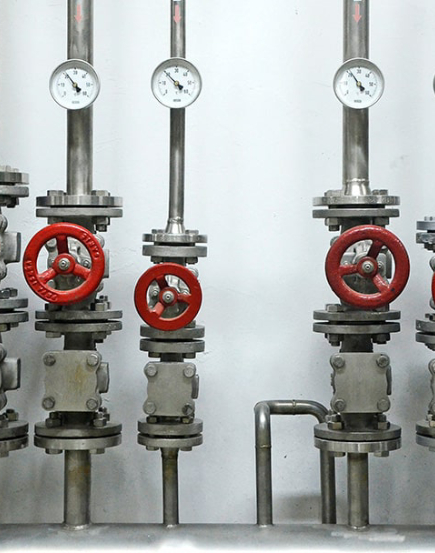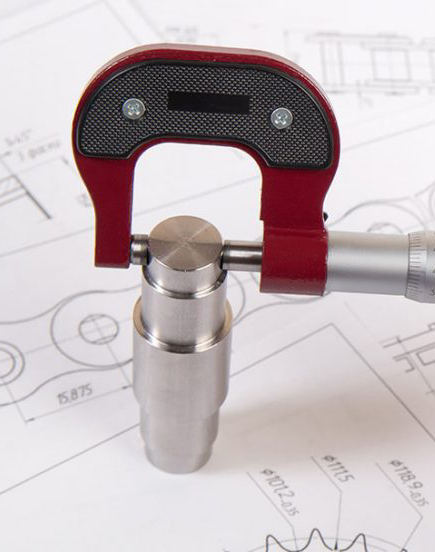
Home - Customers
MRP Customers and sales
Accessing customer information is quick and simple.
Be part of innovation, view our presentation
Customer order management
Accessing customer information is quick and simple. All of your employees have access to the same reliable information, and to a search engine that helps them quickly find what they’re looking for.

Entering Customer Orders and Bids
- Lets you take down notes that won’t be printed
- Lets you duplicate products on a bid to show quantity rebates
- Import finished products to a simple interface to quickly build a customer file
- Include expiration dates on bids
- Import prices defined in the “Evaluations” module
- Input multi-item orders, with quantities, promised delivery dates and production release date
- Each line allows you to input either an item or service charges
- Automatically transform a bid into a customer order

Customer management
There is nothing easier than a system that handles all your production (maintenance) requirements that also has an integrated customer management system that provides detailed information on purchase history, buying preferences, purchasing limits, credits, territory, preferential pricelists, rebates/discounts, shipping information, sales forecast, default carrier, shipping information and much more.
This module allows you to manage customer relationships (current and future). It allows you to quickly have access to all interventions for a given customer, to their statistics and their current projects.
- Sales forecasting
- Manage contacts and view communications and events that occured between your employees and the customer
- Includes the necessary structure for sales and shipping
- Manage customer-specific rebates and preferential pricing
- Manage customer service and service calls
- Manage the customer’s credit line and view their buying statistics
- Manage prospect and customer follow-ups

Logistics management
The handling of logistics is interwoven in our CMMS and supports the flow of parts, products and raw materials between the point of origin and the point of consumption in order to meet requirements of customers.
Logistics management is the part of supply chain management (SCM) that involves the movement and storage of raw materials, of work-in-process inventory, and of finished goods, in order to meet customer’s needs.
Shipping Batches
- Completed order items are grouped together for a customer on the same shipment
- Management of shipping bundles and their locations
- Shipping management and automatic creation of shipping documents (packing slips, bill of ladings, etc.)
- Shipping documents and labels with barcodes
- Reports on the company’s shipping performance based on promised dates versus actual delivery dates
Merchandise Reception Management
- Conversion of ordering units of measure to storage units of measure at reception
- Input of batch numbers received
- Partial or complete receipt, cancellation of partially received orders

Invoicing
In order to link INTERAL to any accounting system, a complete invoicing (payable and receivable) management module was developed.
Sales invoices can be created directly from the shipping management interfaces or using the invoice preparation interface. The latter makes it possible to compare the quantities ordered, shipped and already invoiced in order to facilitate the creation of invoices which can then be sent to customers.
As soon as the submission and the sales order are created, the system ensures that the appropriate sales item is identified, as well as the items related to the taxes collected and paid, in order to limit the number of entries and to eliminate the misallocation of the accounts.
This is made possible by the configuration of accounting groups which are subsequently linked within INTERAL to the products sold by the company.
In order to allow the adjustment of the value of inventories of materials received, the payables can also be entered into the system. In addition to the direct comparison between the amounts invoiced, the quantities received and the amounts recorded when the purchase order was created, the system makes it possible, if any deviation is accepted, to adjust the value of the Inventory through its standardization of purchase orders.
As a result of their input, all receivable and payable invoices can subsequently be exported to the company’s accounting system via an adaptable accounting link, in order to avoid duplication and avoid any transcription errors.

Production
More details about production management

Production management
Developed by Interal, the Production module (MRP software) helps meet the needs of manufacturers in terms of production management monitoring.
Learn more
MRP Production Orders
The production order will allow you to regroup all of your production so you can meet the demand.
Learn more
Traceability
Do you know what traceability software for manufacturing companies is ? It is a powerful tool for any company that has to manage a large number of product lots (batches, components).
Learn more